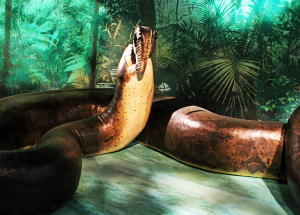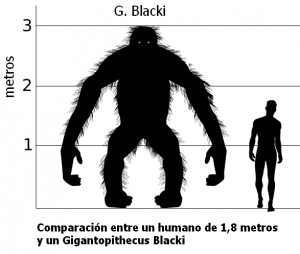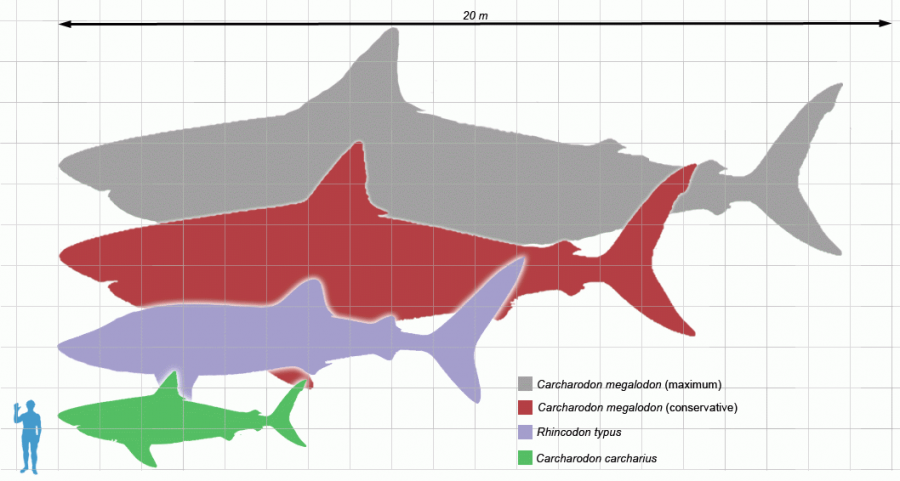Dinosaurs vs. Sapiens
On April 19th, 43 dinosaur eggs were found by Chinese construction workers in Heyuan during road repairs. During a 2 hour process the eggs were extracted and 19 were taken for further examination to determine what type of dinosaur the eggs belonged to. Though strangely, this is not an uncommon occurrence. Heyuan is a dinosaur egg hotspot with over 17,000 discovered; it even has the Guinness world record for having the largest collection of fossilized dino eggs- a whopping 10,008!
With all these eggs being discovered one has to wonder how our lives would be if dinosaurs still roamed. As homo sapien sapiens, we live a privileged life… well most of us. But imagine if creatures like the dakosaurus or titanoboa still existed?

This large reptilian with a slightly fishy body was first found in Germany and parts of England, Russia, and Argentina and was one of the top predators of the sea during the Jurassic period. This apex predator is the Dakosaurus, and can be compared to a modern croc with a length of 16 feet and uniquely shaped teeth which helped it become a top predator during its reign of terror. With speed equaling or surpassing that of a modern day crocodile, it can easily strike and demolish unsuspecting victims like a homo. Imagine: there you are fishing on a dock or a bank when out of no where this predator strikes. Boom. You would be gone; you would now be placed beneath this dakosaurus in the food chain.
If you have ophidiophobia then this creature is not for you. Weighing 2,800 pounds and measuring 48 feet long, Titanoboa is reminiscent to our modern-day boa constrictor, yet acts like a water-dwelling anaconda. The thickest part of it’s body would be as nearly as high as a man’s waist and it would be able to eat anything that would catch its eye. For example, a giantopithecus or a dakosaurus. Even though Titanoboa is enormous, it still moved around with incredible stealth and and had the crushing power strong enough to snap a bus in half. Titanoboa would be a horrible creature to live with because if you lived in an immense swampy jungle, which would be hotter and wetter than in today’s climate, you wouldn’t stand a chance. If you are trying to migrate and you had to pass through such a terrain, your efforts would probably be fruitless.
Last but certainly not least has to be the most fearsome predator of the sea. Megalodon. Megalodon is the largest marine predator to ever be recorded. They lurked through the ocean 28-1.5 million years ago and could reach the length of 65 feet in length, thats bigger than a school bus! Fossils of it’s teeth are recorded to be 7.1 inches long. This fearsome beast is a much larger version of a great white shark, as our modern day great whites get to be about 20 feet in length. The name Megalodon means “big tooth,” and compared to our sharks now who prey on seals, Megalodon preyed on whales. Scientists believe that Megalodons most likely died out due to sea cooling, sea level drops, and a decline in food supplies. Yet in the abyss we call our oceans there is a good chance that a Megalodon could still be lurking around and it could make a comeback. If this would be true we would be a landlocked species just as we would be if it was a common thing if we lived in an era of these massive beasts.

Compared to life that we are living now, if we lived with these creatures and the several hundred more that used to roam, our lives would be much different. There would be little to no free time to read the Jetstream Journal and every day could very well be our last.
For more information about these creatures and more go to:
“10 Terrifying Prehistoric Relatives of Normal Animals – Listverse.” Listverse. 25 Apr. 2013. Web. 30 Apr. 2015.- http://listverse.com/2013/04/26/10-terrifying-prehistoric-relatives-of-normal-animals/
“10 Terrifying Prehistoric Sea Monsters – Listverse.” Listverse. 12 Jan. 2013. Web. 30 Apr. 2015.
“How Titanoboa, the 40-Foot-Long Snake, Was Found.” Smithsonian. Web. 30 Apr. 2015. – http://www.smithsonianmag.com/science-nature/how-titanoboa-the-40-foot-long-snake-was-found-115791429/?no-ist














Katie Rainsberger • May 21, 2015 at 7:25 pm
Nikol, I truly appreciated all the super cool, super unique facts about both, dinosaurs and sapiens, because we have been going on the theme of animals lately. The journal will surely miss you next year.